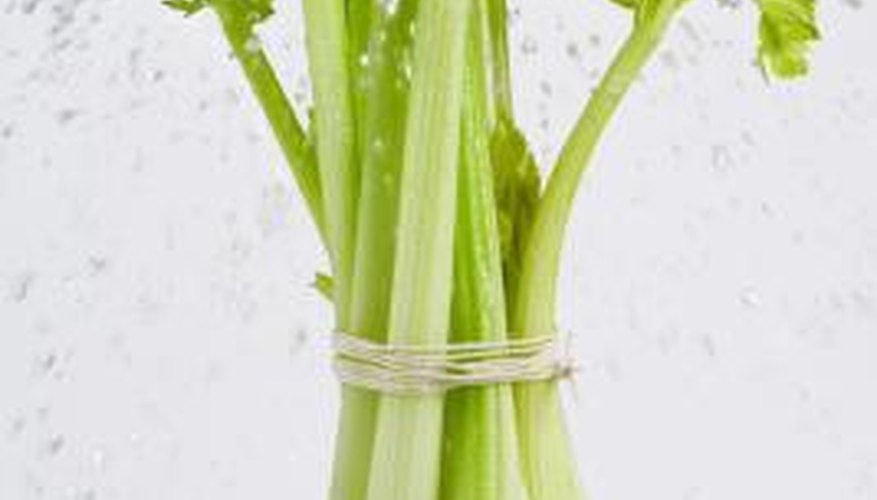One of the tougher aspects of trying to grow celery is its sensitivity to temperatures. Too many days of hot weather cause the plant's water needs to increase, causing the celery to absorb more water from the soil.
General Requirements
Celery should always have plenty of water in order not to dry out --- about 1 or 2 inches from either rain or irrigation per week, note Brandon West and Dan Drost of Utah State University. Growing temperatures should ideally be between 12.7 and 18.3 degrees C, with hotter temperatures requiring more water and colder temperatures causing the plants to flower and go to seed.
Transpiration
Like other plants, celery undergoes transpiration, in which the water travels up throughout the plant and eventually outside it, where the water evaporates away. This cools down the plant, but the constant evaporation means the plant has to take up yet more water.
- One of the tougher aspects of trying to grow celery is its sensitivity to temperatures.
- Like other plants, celery undergoes transpiration, in which the water travels up throughout the plant and eventually outside it, where the water evaporates away.
Temperature Effect
Temperature fluctuations affect the water both in the soil and on the plant. Hotter air temperatures cause greater evaporation, so the celery takes up more water. The hotter temperatures also increase evaporation from the soil, so unless the celery is kept watered thoroughly, it may experience drought stress.
